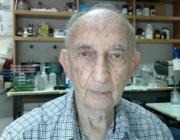Abstract:
Various cationic polyelectrolytes (poly-alpha-amino acids and histones), lectins, the chemotactic peptide, f-methionyl-leucyl-phenylalanine (fMLP), the calcium ionophore A23187, and phorbol myristate acetate (PMA) were investigated regarding their capacity to induce luminol-dependent chemiluminescence (LDCL) and superoxide production by human blood leukocytes. Although when tested individually, poly-L-arginine (PARG), phytohemagglutinin (PHA), concanavalin A (Con A), or fMLP induced only a low to moderate LDCL response, very intense synergistic CL reactions were obtained by mixtures of PARG + PHA, PARG + Con A, PARG + PHA + fMLP, Ca2 + ionophore + PARG + PHA + fMLP, and PARG + PMA. The sequence of addition of the various agents to WBC in the presence of luminol absolutely determined the intensity of the LDCL signals obtained, the highest reactions being achieved when the WBC were preincubated for 2-3 min with A23187 followed by the sequential addition of fMLP, PARG, and PHA. These "multiple hits" induced CL reactions which were many times higher than those obtained by each factor alone. On the other hand, neither poly-L-lysine, poly-L-ornithine, poly-L-histidine, nor poly-L-asparagine, when employed at equimolar concentrations, cooperated efficiently with PHA and fMLP to trigger synergistic LDCL responses in leukocytes. Concomitantly with the induction of LDCL, certain ligand mixtures also triggered the production of superoxide. The LDCL which was induced by the "cocktail" of agents was markedly inhibited by sodium azide (93% inhibition), but to a lesser extent by catalase (10% inhibition) or by superoxide dismutase (20%-60% inhibition). On the other hand, scavengers of singlet oxygen and OH (sodium benzoate, histidine) did not affect the synergistic LDCL responses induced by these multiple ligands. Cytochalasin B also markedly inhibited the LDCL responses induced either by soluble stimuli or by streptococci preopsonized either with histone or with polyanethole sulfonate. The LDCL responses which were induced by mixtures of PARG and concanavalin A were also strongly inhibited by mannose, alpha-methyl mannoside, and poly-L-glutamic acid. The data suggest that the LDCL responses induced by the soluble ligands involved a myeloperoxidase-catalyzed reaction. The possible employment of "cocktails" of ligands to enhance the bactericidal effects of PMNs, macrophages, and natural killer cells on microbial cells and mammalian targets is discussed.
